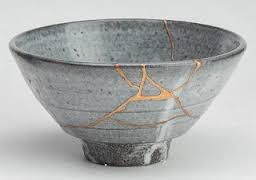 Wabi-Sabi is the Japanese art of finding beauty in imperfection. (Not to be confused with wasabi – the Japanese plant with a thick green root that tastes like strong horseradish.)
Wabi-Sabi is the Japanese art of finding beauty in imperfection. (Not to be confused with wasabi – the Japanese plant with a thick green root that tastes like strong horseradish.)
I love the idea of Wabi-Sabi. It celebrates dents, cracks, rust, and all the other marks that time and weather have left behind. Wabi-Sabi allows us to embrace age spots, tarnish, frayed edges…and the loving use they represent.
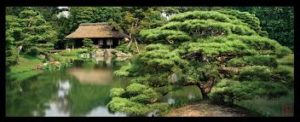
No perfection for Rikyu. Legend has it that after he meticulously tended the tea master’s garden, Rikyu shook a nearby tree where blossoms scattered to the ground. This is so the garden would not appear too pristine.
The Legend of Wabi-Sabi
According to Japanese legend, a young man named Sen no Rikyu sought to learn the elaborate set of customs 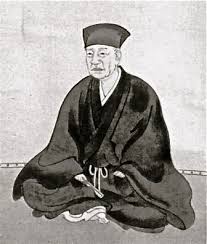 known as The Way of Tea. He went to the tea-master, who tested Rikyu by asking him to tend the garden. Rikyu cleaned up debris and raked the ground until it was perfect, then scrutinized the immaculate garden. Before presenting his work to the master, he shook a cherry tree, causing a few flowers to spill randomly onto the ground.
known as The Way of Tea. He went to the tea-master, who tested Rikyu by asking him to tend the garden. Rikyu cleaned up debris and raked the ground until it was perfect, then scrutinized the immaculate garden. Before presenting his work to the master, he shook a cherry tree, causing a few flowers to spill randomly onto the ground.
To this day, the Japanese revere Rikyu as one who understood, to his very core, this deep cultural idea known as Wabi-Sabi–a philosophy that reveres age and imperfection. (At that time [15th century], it was also protest against the prevailing cultural aesthetic of lavishness and ornamentation.)
You might love Wabi-Sabi, too, and you may not even know it. Do you like the vintage farmhouse feel? The comforting patina of the scarred, the cracked, and the well-worn?


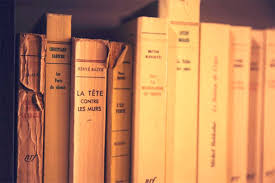
Maybe you call it ‘shabby chic’ or ‘rustic charm.’ Whatever it’s called, look around your home to see if you can find examples of Wabi-Sabi style. When I looked around, I found things I actually bought simply because they looked old. (I even made stuff look old, because it looked too new.)

Bought to look old.
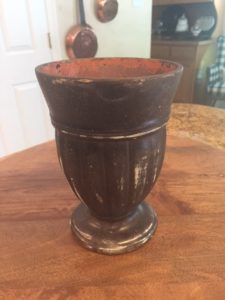
This vase looked ‘too new,’ so I painted with black paint, then distressed with a piece of sandpaper.


I love the shape of this rustic bowl. (Yikes…those bananas aren’t Wabi-Sabi–they just need to be thrown out.)
But then my I found the authentic–most meaningful–Wabi-Sabi items.

My iron skillet. So many meals, so many scars and scratches.

My daughter’s Puff-a-lump. Hugged to perfection.

My 16-year old Wabi-Sabi dog, Charley. I couldn’t love him more.
Author Cecile Andrews says, “”Sabi’ means ‘the bloom of time,’ connoting tarnish and rust, and the enchantment of old things. It brings appreciation for dignified, graceful aging: worn cobblestones, weathered wood, oxidized silver. Paired with ‘wabi,’ it becomes a signature philosophy that reveres age, imperfection, and natural order.”*

Simply beautiful.
If only we could embrace the philosophy of Wabi-Sabi like Rikyu did. Perhaps we could find peace, beauty, and acceptance in the passing of time. Wrinkles, crinkles, age spots, and all.
William Shakespeare obviously understood the philosophy of Wabi-Sabi:

And he wasn’t even Japanese.
*Less is More: Embracing Simplicity for a Healthy Planet, a Caring Economy and Lasting Happiness.





4 Comments
I LOVE Wabi Sabi and never knew. I loved this blog Sharon. 🙂
Right, Beverly.
I learned this term from master photographer Tim Flanagan in Salado.
Sharon
I never knew my love for old, scratched things – like myself – had such an eloquent name. Wabi Sabi makes me feel better.
I know, Jane. I never knew there was such a term either. Wow–the Japanese are way ahead of us!
But let’s appreciate every wrinkle and scar, shall we?
Sharon